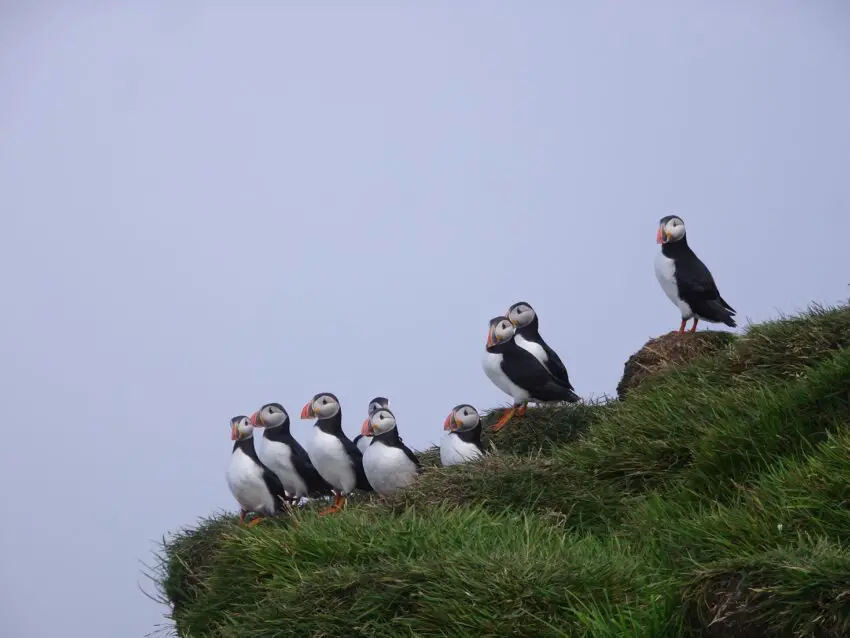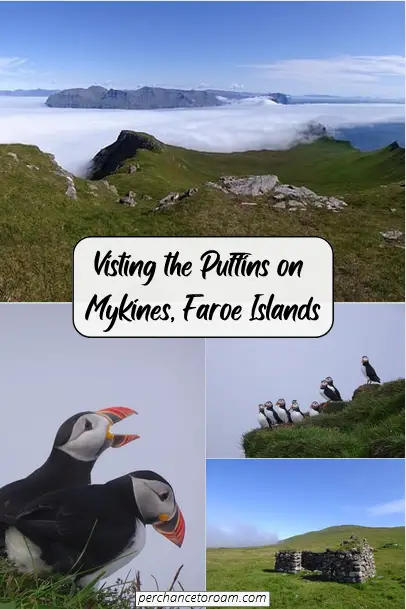Mykines Island is rightfully one of the Faroe Islands’ most popular destinations. Some people also refer to it as ‘Bird Island’, and it’s easy to see why. We had encountered plenty of seabirds in other parts of the archipelago, but nothing prepared us for the sheer amount of puffins we spotted on Mykines.
Apart from the cute little creatures, Mykines is worth visiting for the hiking opportunities and of course the utter sense of isolation on the westernmost island of the Faroes. Here’s everything you need to know about visiting this unique place.

This post may contain affiliate links, and I might earn a small commission at no additional cost to you. For more info, click here.
How to Reach Mykines by Ferry
The easiest way to reach the island is by taking the ferry from Sørvágur on nearby Vágar Island. Sørvágur can be reached by bus from Tórshavn on Streymoy or Miðvágur on Vágar. You can check the timetable here.
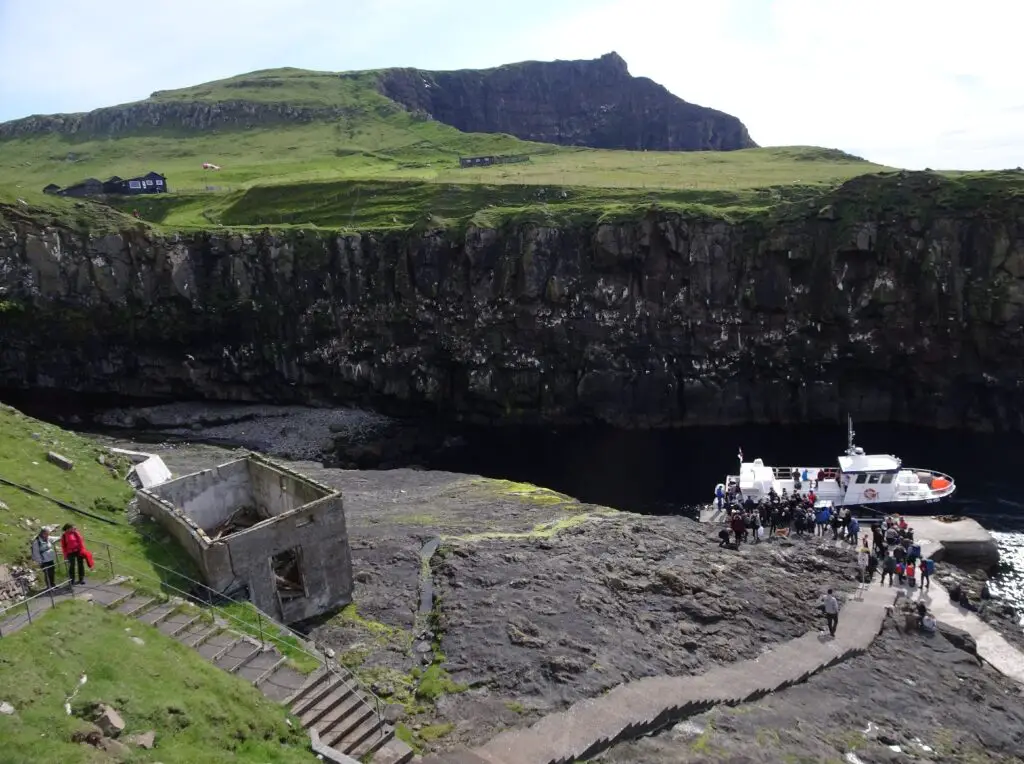
During the summer travel season, boats tend to fill up fast, so I highly recommend pre-booking your ferry ticket. When we did the trip, the boat was completely booked out for both the out and return trip. At the time of writing, three daily boats travel to the island and back. You can check the ferry schedule and book your trip here.
The boat trip to Mykines took about an hour and was pretty smooth with nice views of the southwestern coast of Vágar, including a distant view of Múlafossur Waterfall in Gásadalur. Still, the weather on the Islands is always unpredictable and connections can be cancelled on short notice.
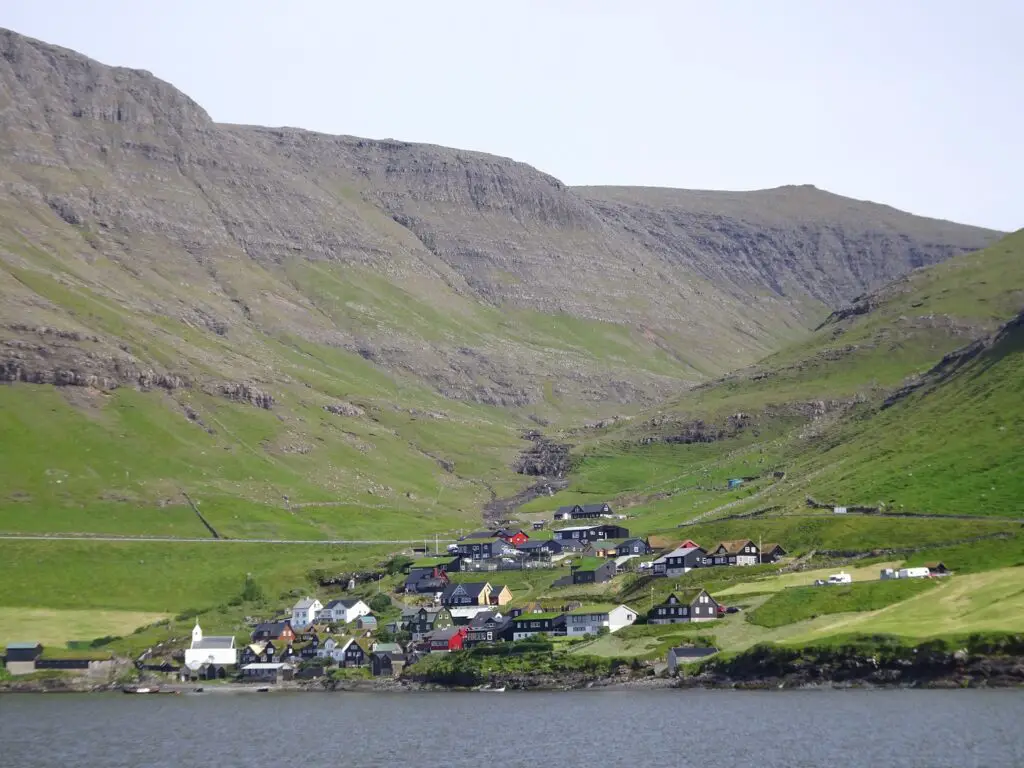
If you want to make sure that your visit to Mykines works out, I recommend not booking the trip to Mykines on your last day, but instead to keep some flexibility (which is a good general rule for exploring the islands).
How Much is a Visit to Mykines?
We paid 300 DKK per Person for the return ferry trip. While we were told that there is also a general fee for visiting the island, nobody collected this from us, either on the boat or on the island.
What to Bring
As always on the Faroe Islands, the weather can change very quickly, so it’s best to dress in layers with a rain jacket on top. Especially on the way to Knúkur, the grass can get rather tall), and even if it hasn’t been raining, will likely be wet due to fog and dew, so make sure your hiking shoes are well impregnated.
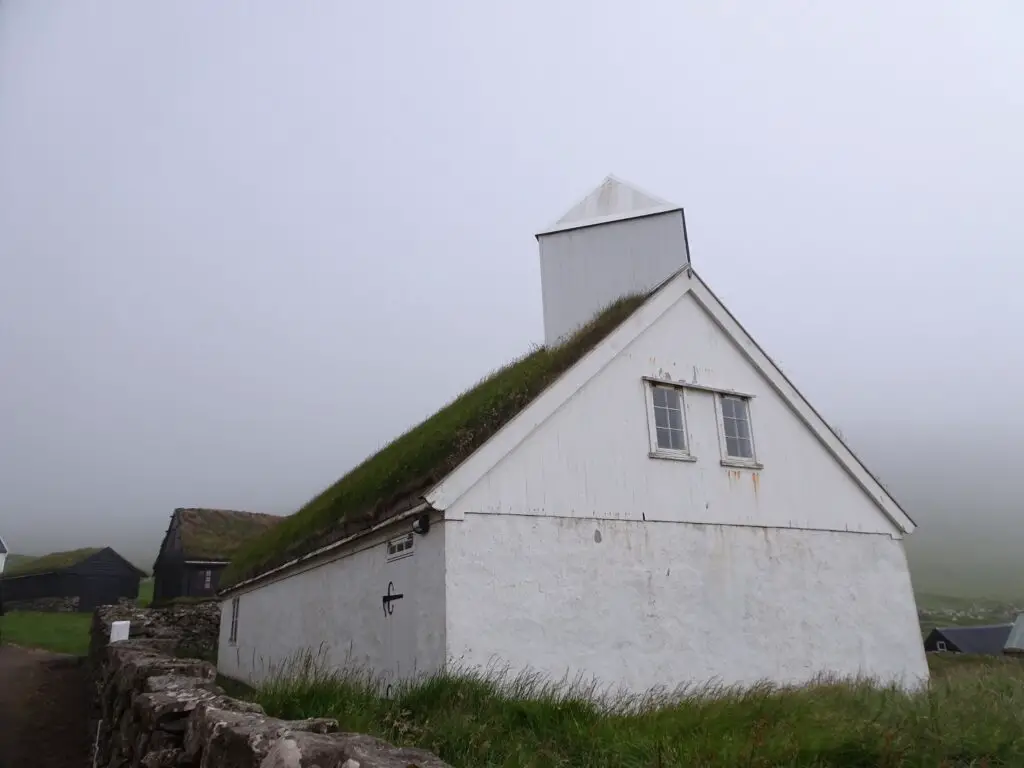
While there is a small café in the village (see below), it’s not the cheapest place (no surprise there), so bringing water and snacks is a good idea.
Where to Spot Puffins on Mykines
We spotted the largest amounts of puffins on the western tip of the island near the bridge to Mykineshólmur islet. To get there, just follow the stairs up from the boat landing, follow the paved road east for a bit and turn left up the hill before entering the village.
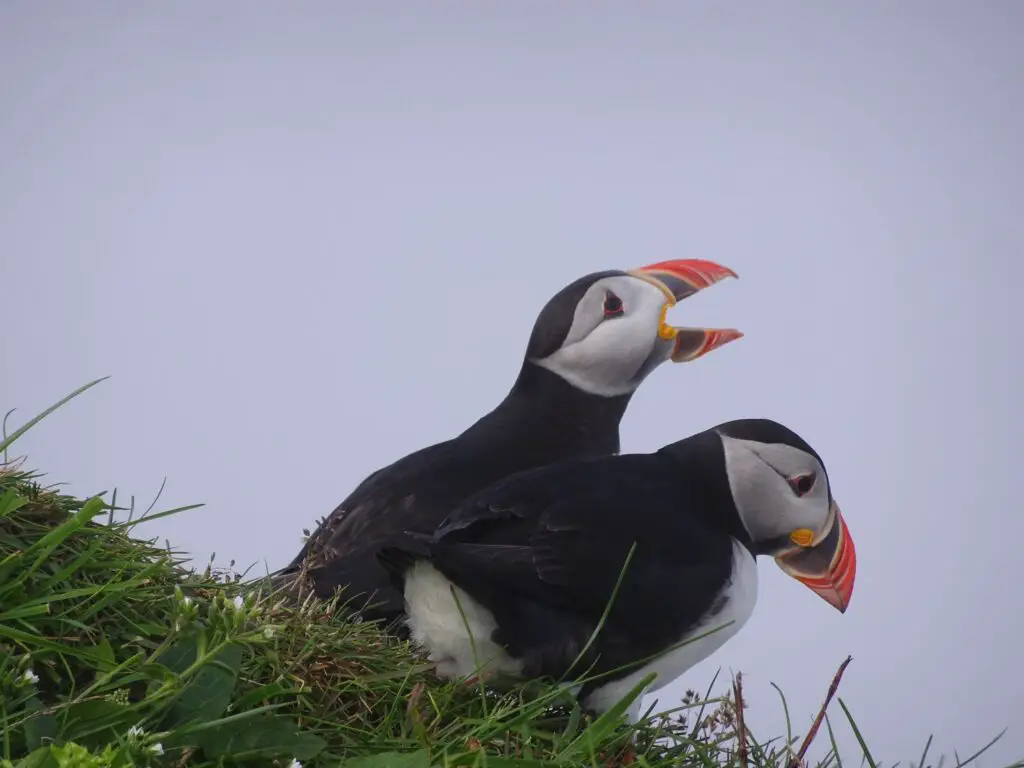
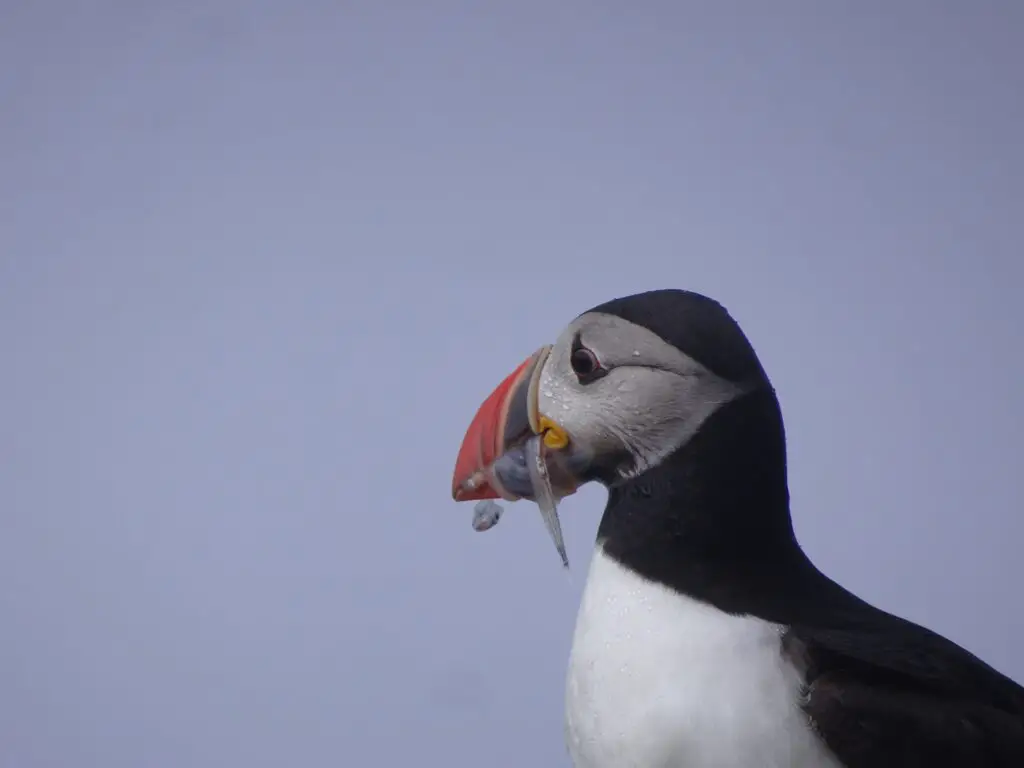
We saw the biggest numbers of puffins on the northern coast of the little peninsula, close to the stone monument atop the hill. It’s a lot of fun watching the little birds jump off the cliffs and if you’re patient, you might see them returning with a bounty of fish in their bill.

The birds seem to be quite used to people watching them and taking their pictures, as they didn’t seem to really take notice (or at least react to our presence). Still, make sure not to get too close to where they are, as they built their nests underground and stepping on them could cause them to collapse. If you see holes anywhere in the ground, steer clear of them.
Hiking on Mykines
Apart from puffin-spotting, hiking is the main attraction on Mykines. One of the more popular routes used to be the one leading to the lighthouse on the islet of Mykineshólmur, but the bridge over the sea has been closed for a couple of years now due to a landslide.
Thus, we decided to hike to the top of the highest hill on the island instead. Knúkur may only have an elevation of 560 m, but the hike is still quite strenuous, especially since there’s no distinct trail, and you have to walk cross-country for the most part.
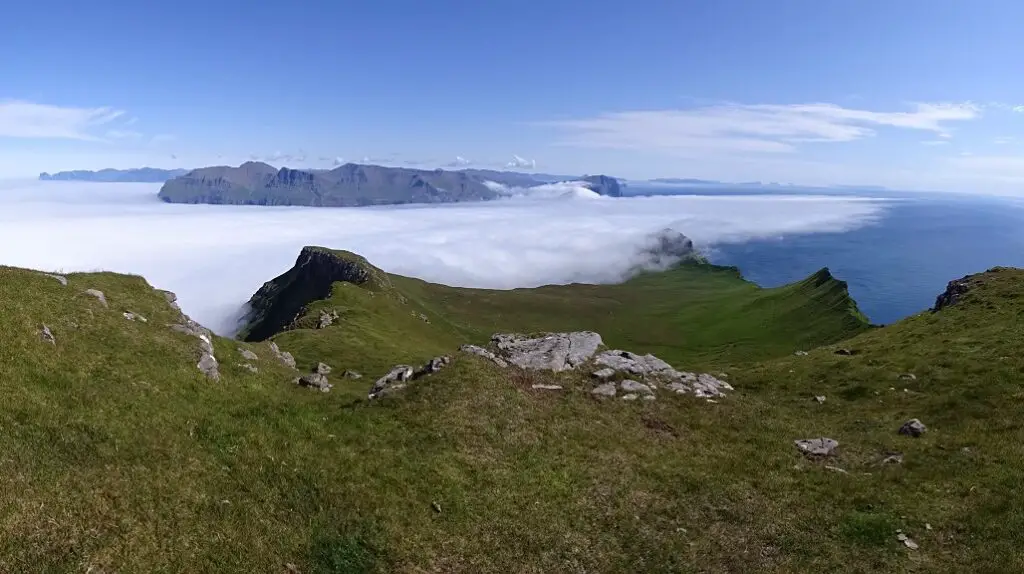
Also, be aware that Great Skuas are nesting on the flanks of the mountain and might aggressively defend their offspring when you enter their territory. We were followed by one for a few minutes and had to avoid its dive-bomb attacks by ducking when it came close. If that sounds too stressful, bring a walking stick or umbrella and hold it high when they fly at you, as they usually only attack the highest point.
The view from the top of Knúkur is well worth the struggle, though, and we managed to spot Vágar, Streymoy, Sandoy and Suðuroy Island in the distance, while the closer environs were atmospherically shrouded in clouds.
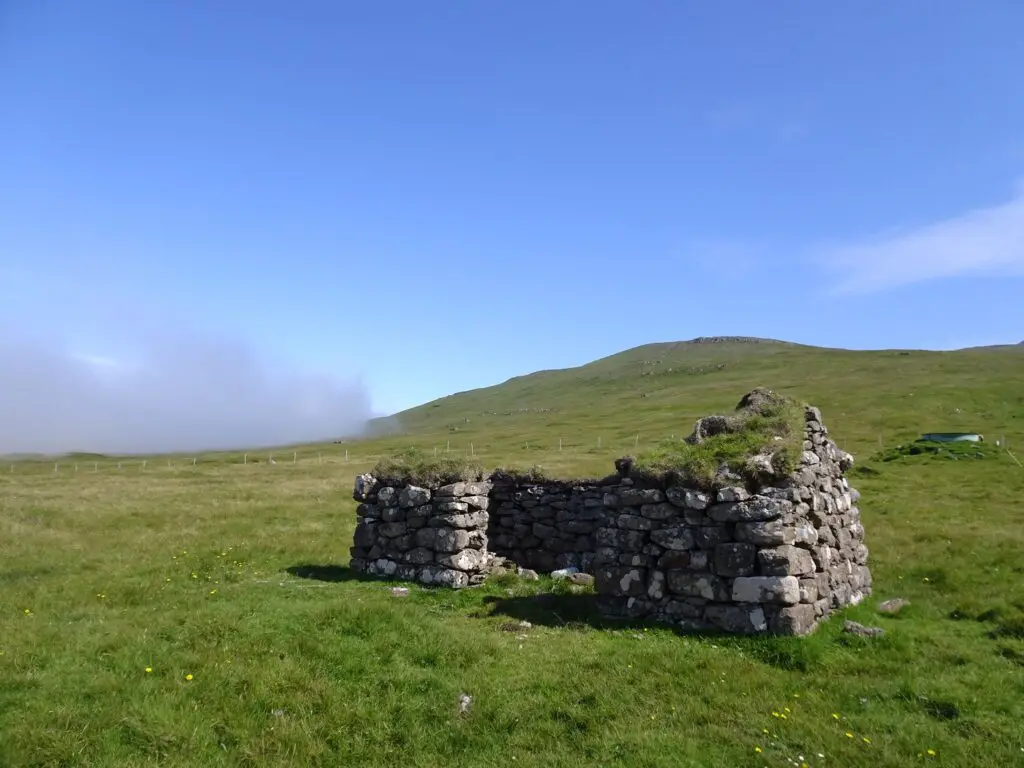
Don’t be deterred from climbing the hill if it’s cloudy, as the conditions can change super quickly on the islands, plus the view of a sea of clouds from above is a magical sight in its own right.
Can You Stay on Mykines Overnight?
You can, but most people (including us) visit the island on a day trip. In our opinion, it’s the most convenient way, as there aren’t many tourist amenities you can comfortably see everything in a day.
If you’re on a budget, I recommend staying at Giljanes Hostel in Miðvágur. Otherwise, Guesthouse Hugo is located in Sørvágur, where the ferry to Mykines leaves.
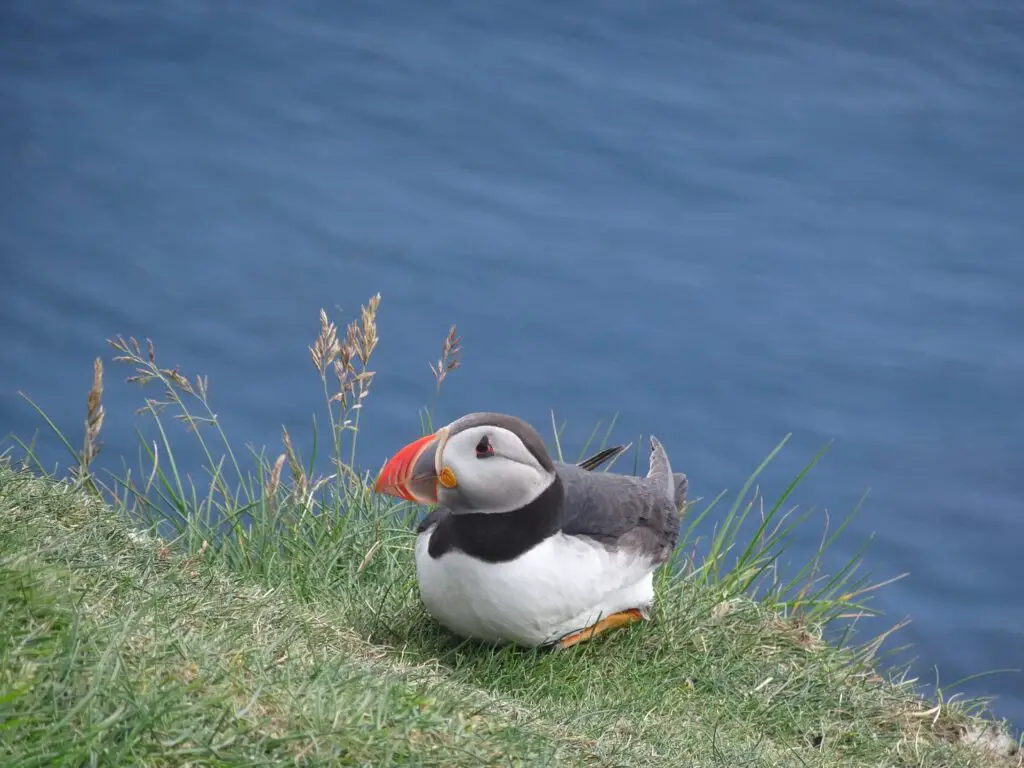
If you still want to stay on the island, the tourist website of Vágar lists some potential options.
Where to Eat on Mykines
The only place to grab some food on Mykines is The Local’s Café, which is located in the small village at the western end of the island. Here you can buy soups and sandwiches, as well as hot beverages, but be aware that due to the lack of competition, the place can get very crowded – especially in the hour or so before the ferries make their return trip to the mainland.
The place is usually open when day visitors make their way to Mykines during the season. You can check the current opening times here.
Where to Go Next
Tórshavn, The Faroes’ Quaint Capital
Vestmanna, Home to the Impressive Bird Cliffs
Kirkjubøur, The Faroe Islands’ Most Important Historical Village
